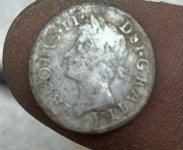Azquester
Bronze Member
- Dec 15, 2006
- 1,736
- 2,596
- Primary Interest:
- All Treasure Hunting
Bill what does that have to do with topic of thread.
It is all part of the chain of evidence.
First you look at the man and his credibility as we have no other testimony to go by.
If he was not a nice guy and he lied and all those associated with him lied how are we to determine if the evidence points to a conclusion all involved were telling the truth?
If he's not telling the truth and they weren't we can argue that the mine is not real and there by doesn't exist.












 oro blanca.
oro blanca.

